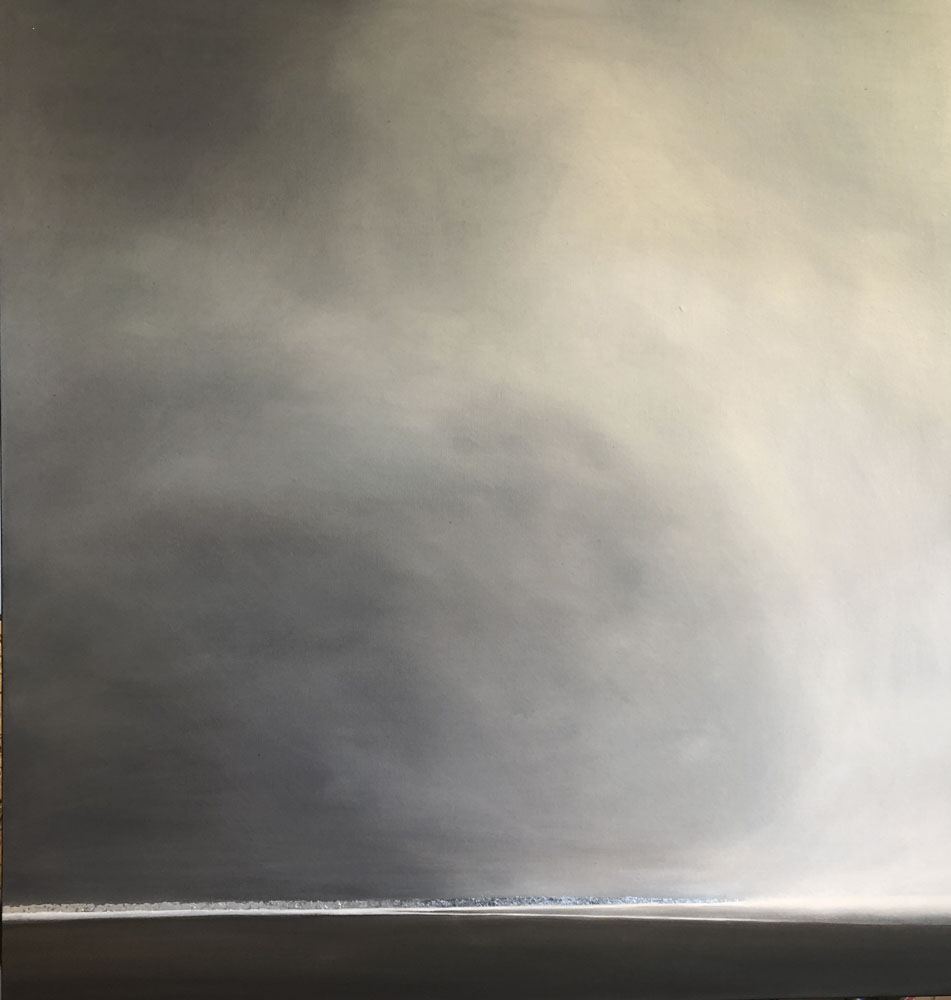Holy Innocence – often used ironically in reference to another’s naivete
or Holy Simplicity – expressing astonishment at another’s, or my own, naivete – Judith Brannen
I had a solo exhibition last year which I titled “A condition of complete simplicity (Costing not less than everything).” All of the paintings were titled from T.S. Eliot’s Four Quartets; I had the idea that walking through the exhibition would be akin to walking through poetry. I have been inspired by his use of language for a long time. I don’t pretend to understand everything he has written, but there is something about his phraseology that makes me feel a certain way—and it’s the same way that places I love, or paintings I respond to, or other writing prose or poetry—make me feel. If I could put words to this feeling, I would describe it as mystical, a drawing close to the mythopoeic, kind of otherworldly. As my art has evolved over many years, I find myself working hard to pare down my penchant for extreme detail and allow form and color in the simplest way possible to manifest that ‘feeling’ that I want to exist in more and more. Of course it is a metaphor for the desire for live a more quiet, simple, and meaningful life. For a while, when people asked about my religious praxis, I would say it was “monkish” – meaning only that I desire to live a contemplative life, but I’m not very good at it! (Also implied – tongue in cheek – by my title: Sancta Simplicitas.)
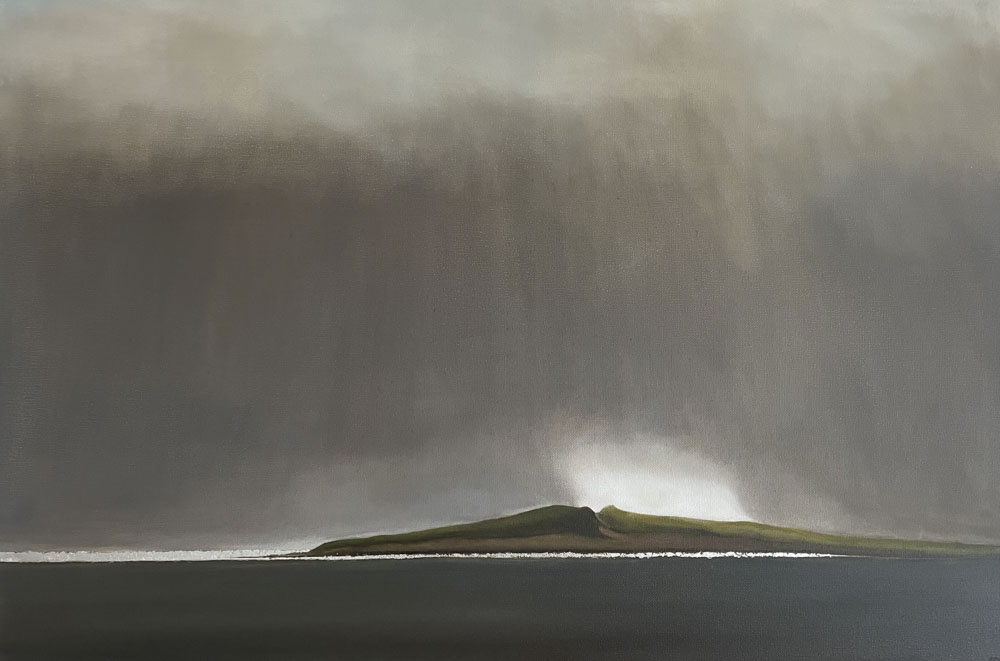
My father, who passed away in 2011, was a peace activist. He was deeply disturbed and affected his whole life by what he witnessed in Europe as a very young man. He was a pilot, so his was not battlefield experience. He mostly flew supplies and wounded and what he saw that disturbed him were the multitudes of displaced people. He tirelessly wrote letters, marched in peace rallies, was a member of Veterans Against Nuclear Arms and other anti-war organizations. He would have been so very sad to see the ongoing patterns of refugees – Syrians, Afghans, Myanmar-Rohingya, Venezuelans, South Sundanese – and now Ukrainians. These situations, the wars that provoke them and then the pandemic which has paralyzed us in many ways have been an undercurrent in my life and work of late.
What affected him also affects me. My last body of work was called “The Peace Process.” I have been trying to find a way for my work to impart peace – and to find my own peace in the process. Thomas Merton says, “Perhaps peace is not, after all, something you work for, or ‘fight for.’ It is indeed ‘fighting for peace’ that starts all the wars. What, after all, are the pretexts of all these Cold War crises, but ‘fighting for peace?’ Peace is something you have or do not have. If you are yourself at peace, then there is at least some peace in the world.”
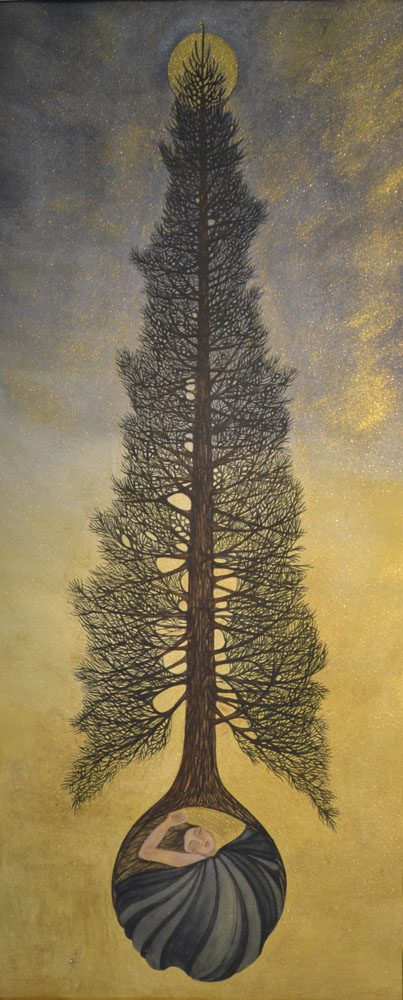
What I’ve discovered is that to create these simple, minimalist peaceful works is far more difficult than the art I made for many years. My work in watercolor has been very controlled, detailed, mathematical, and I’ve found that in art as in life, it’s very hard to give up control! For the works in oil, I begin often with just a sense of a color. I’m trying really hard to allow intuition to guide me. Sometimes I have a landscape/seascape impression that I want to convey because it has moved me. I actually go on “meditation” drives most days and just allow myself to be awed by what the sea and sky are doing. It is endlessly beautiful. I especially love the passage of storms – to see them form, and then grow wild; wind and waves and movement everywhere, and then the calm.
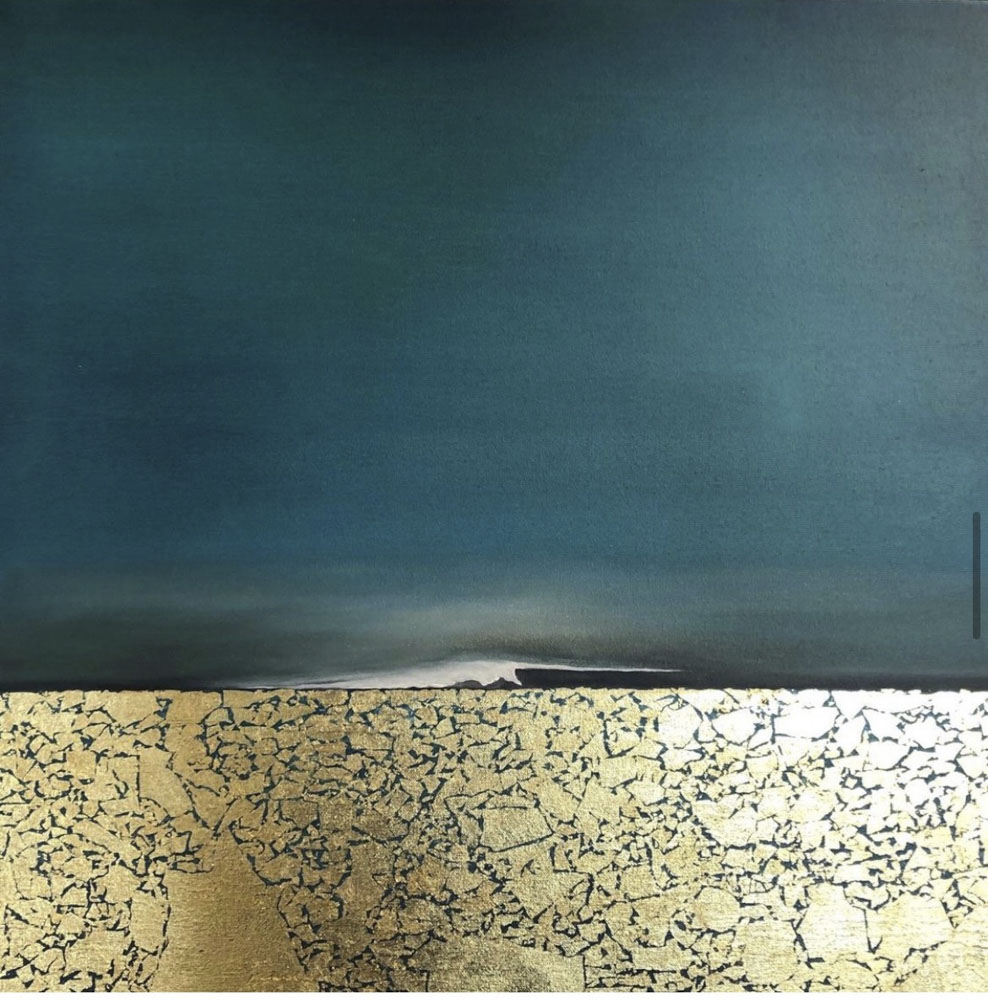
The metaphor is not lost on me. You can probably see how the unsettled passages of T.S. Eliot’s poetry bear witness to my own angst/peace processes, and how that is part of “the outward expression of the inward life” – my mantra for how it happens.
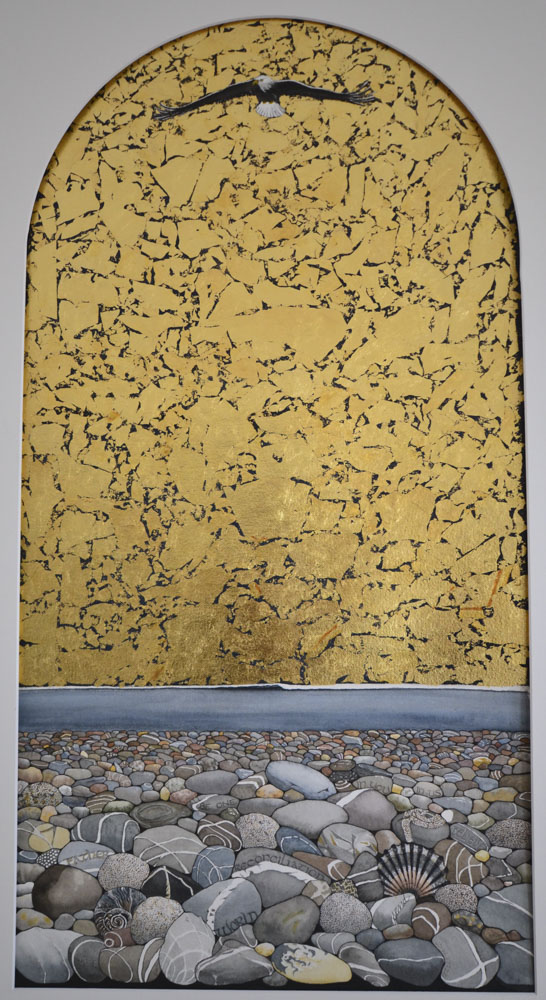
I almost always retain a horizon line in my oil paintings. This, I guess, represents in some ways the demarcation between the physical and the spiritual. I have a sneaking suspicion that as we evolve and grow into beings who truly understand “Incarnation,” we may not need this “line.” I think that T.S. Eliot was getting close to that concept in the passage, where he says, “I said to my soul, be still, and wait without hope
For hope would be hope for the wrong thing.”
The use of Gold Leaf in my work is also metaphoric. I think it is a symbol for the valuable, for the refined, for the hard-won, for the things that will last and will retain strength and beauty. For me it also signifies fearlessness. Fear has always been an issue for me in the form of anxiety. As Hannah Arendt says: “Fearlessness is what love seeks. Such fearlessness exists only in the complete calm that can no longer be shaken by events expected of the future. Hence, the only valid tense is the present, the Now.” She herself was a Holocaust survivor and refugee, who became a political philosopher and author.
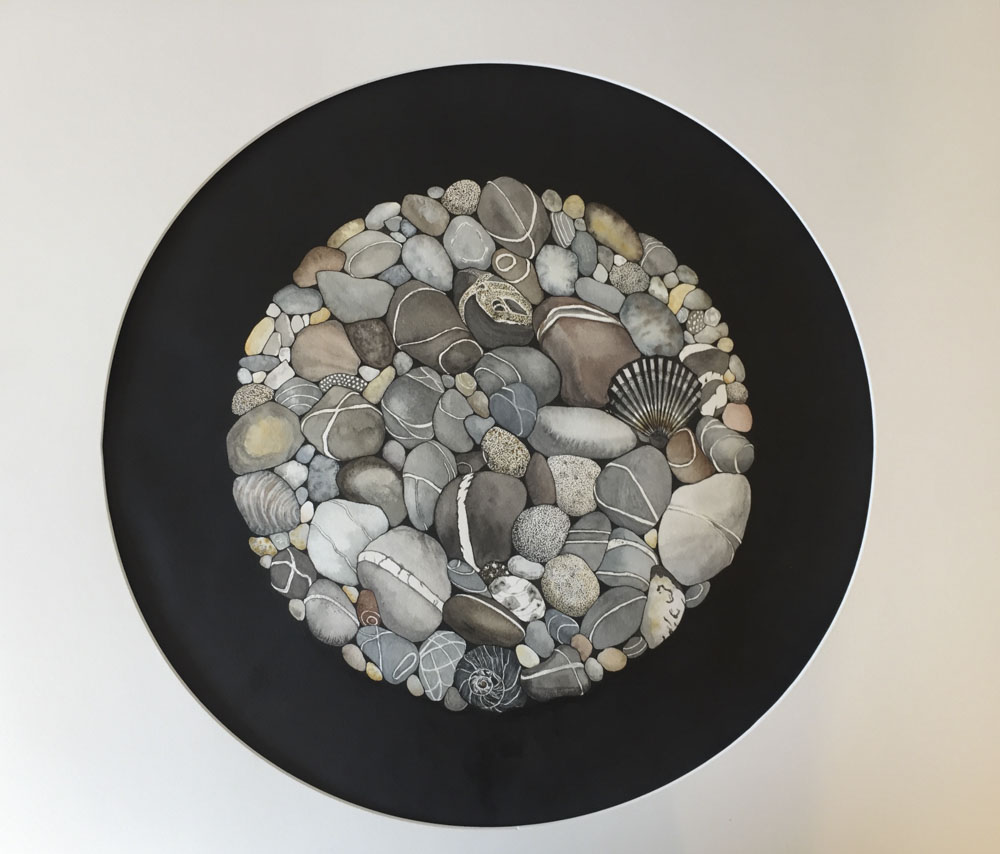
With the drawing of this Love, and the voice of this Calling
From “The Four Quartets: Little Gidding” by T.S. Eliot
We shall not cease from exploration
And at the end of our exploring
Will be to arrive where we started
And know the place for the first time.
Through the unknown, remembered gate
When the last of earth left to discover
Is that which was the beginning;
At the source of the longest river
The voice of the hidden waterfall
And the children in the apple-tree
Not known, because not looked for
But heard, half-heard, in the stillness
Between two waves of the sea.
Quick now, here, now, always –
A condition of complete simplicity
(Costing not less than everything)
And all shall be well and
All manner of thing shall be well
When the tongues of flame are in-folded
Into the crowned knot of fire
And the fire and the rose are one.
Judith Brannen has lived on the Eastern Shore of Nova Scotia since 1974. She grew up in New Brunswick and graduated from the New Brunswick College of Craft and Design with a Major in Weaving and a Minor in Pottery. While raising their family, she and her husband, John, worked as craftsmen from a studio they built next to their ancient Acadian home in West Chezzetcook, Nova Scotia. In the mid-nineties, Judith began painting. From 2004 to 2006 she studied theology at St. Stephen’s University. She sat on the Board of Governors of St. Stephen’s University for 8 years, and also on the Board of Visual Arts Nova Scotia for 6 years.

